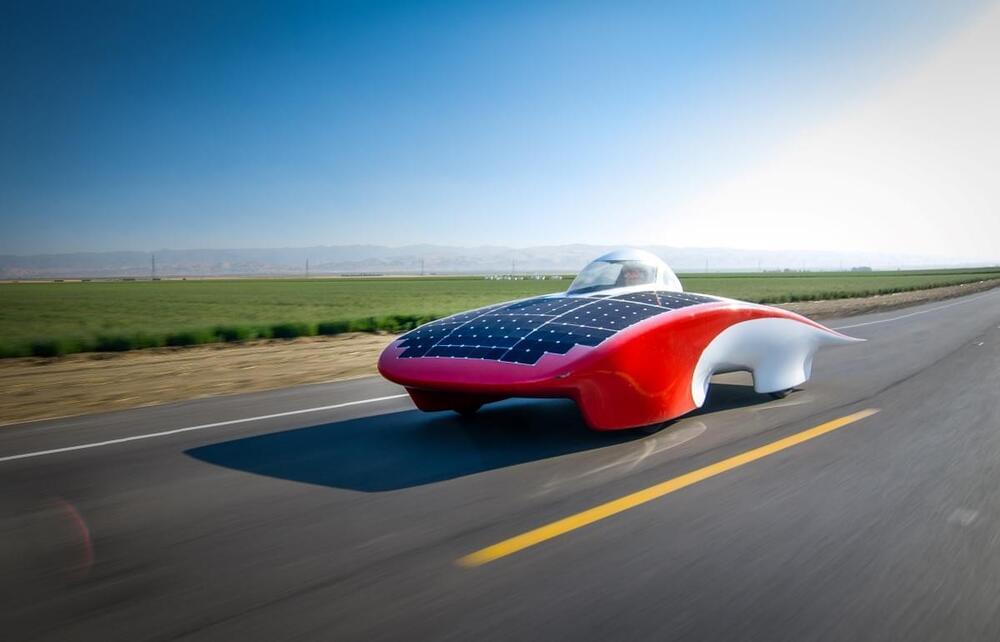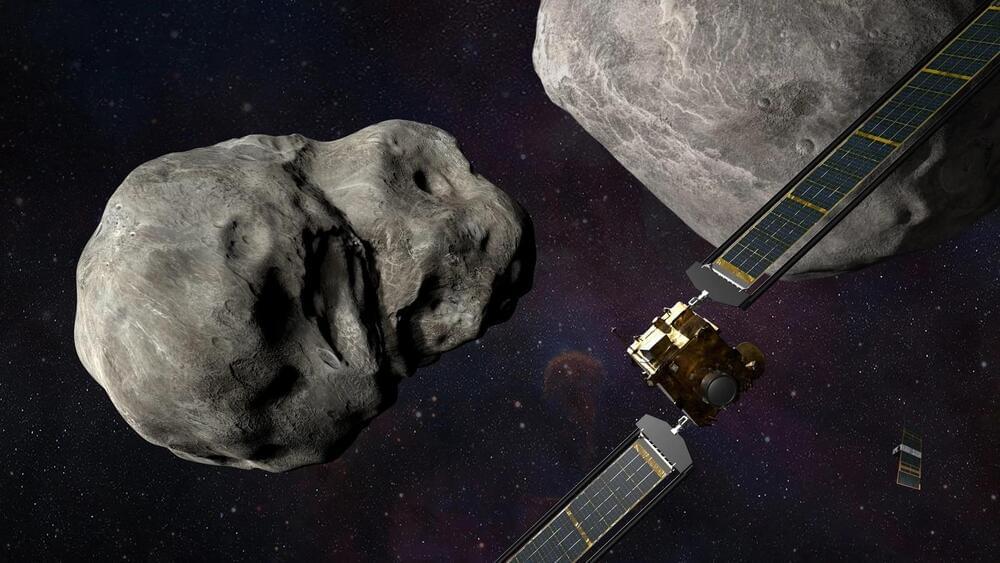With the world turning to electric vehicles and other battery-powered machines, a strong supply and demand gap is expected with lithium in the coming years. A new solar generator using sodium-ion batteries might just be the solution we need.
Get the latest international news and world events from around the world.


How to talk about death and dying
Our reluctance to think, talk or communicate about death is even more pronounced when we deal with others’ loss compared to our own, new research finds, but either way we tend to frame attitudes and emotions in a sad and negative way.
Teaching new more positive ways to address these difficult conversations is the focus of a new paper in PLOS ONE journal by palliative care specialists across Australia.
Led by Flinders University’s Research Centre for Palliative Care, Death and Dying (RePaDD) and Palliative and Supportive Services, researchers from Flinders, CQUniversity Australia, NT Palliative Care Central Australia and University of Technology Sydney, surveyed 1,491 people about the use of language to express their feelings and insights into death and dying.

Wireless providers push 5G forward over aviation objections
The ongoing dispute between wireless carriers and the aviation industry heated up over the holidays, with AT&T and Verizon on Sunday refusing a request from Transportation Secretary Pete Buttigieg to delay their planned 5G deployments.
Why it matters: The Federal Aviation Administration has warned that potential interference from 5G signals, especially in bad weather, could cause flight cancellations or force planes to divert to different airports.
Instead of further postponing their 5G plans for a second time, the wireless providers offered to beef up protections around airports to address concerns about potential signal interference with aircraft equipment.

DBPOWER’s portable power station has 18W USB-C/250W AC at $135, more in New Green Deals
If you’re wanting to be prepared for any situation that arises, having a portable power station in an emergency kit is a solid choice all around. The DBPOWER model on sale today offers a few crucial features to have on hand in an emergency. The 250W AC plugs can power small appliances and other crucial devices if the power goes out, and there are two USB-A and an 18W Type-C port in addition to an LED light and the ability to recharge via solar panels or your car. It’s a solid package all around for its sale price of $135, making now a great time to pick it up. You’ll also find discounts on electric lawn mowers and much more below, as well. We also have a wide selection of Tesla, Greenworks, and other e-bike discounts in today’s New Green Deals, so you won’t want to miss that either.
Head below for other New Green Deals that we’ve found today, more on why going electric for your yard tools like the mower on sale is important, and of course Electrek’s best EV buying and leasing deals. Also, check out the new Electrek Tesla Shop for the best deals on Tesla accessories.
Natrogix (96% positive lifetime feedback) via Amazon is offering the DBPOWER 250Wh Portable Power Station for $134.99 shipped once you clip the on-page coupon. For comparison, you’re saving $45 here and scoring one of the best prices of the year here. This portable power station delivers an AC wall outlet with 250W of power available to run things like small appliances, TVs, coffee makers, CPAP machines, and more. On top of that, there are two USB-A ports with 2A/1A outputs, an 18W Type-C output, and more. This portable power station also delivers three charging methods that range from a standard 110V socket to a car 12V/24V adapter or even solar panels. You’ll find a built-in LED flashlight that features three modes as well allowing your new portable battery to be very multi-functional.

NASA raises warning of 5 asteroids heading towards Earth in January, 2022
An asteroid as large as Big Ben will be approaching Earth in January, 2022. However, it is not the only asteroid heading towards Earth.
The year 2022 has just started and here we are with dire NASA warnings of potentially hazardous asteroids heading for Earth. The National Aeronautics and Space Administration (NASA) has reported that as many as five asteroids are coming towards the Earth in the first month of the year. An asteroid around the size if a bus will approach the Earth in the first week of January itself.
Asteroids, comets, and meteoroids are large rocks in space that orbit the Sun and occasionally vary their orbits due to the gravitational attraction of planets. When these space rocks do collide with any planet, it’s usually a disaster. That’s why, even when an asteroid with a diameter of more than 150 metres approaches Earth, NASA classifies it as a potentially hazardous asteroid and monitors it closely.
Asteroid 2021 YK which is 38 feet (12m) wide is expected to pass within 118,000 miles of Earth by today.

These new nailable solar shingles are installed like a traditional roof
The “world’s first” nailable solar shingle, the Timberline Solar Energy Shingle, is being launched today by GAF Energy, the sister company of GAF, the largest roofing and waterproofing company in North America.
The Energy Shingle is combined with other standard roofing components to create the “Timberline Solar” roof system. GAF Energy claims to have the only product to integrate solar technology into existing roofing processes and materials, resulting in a full-fledged solar roof.
GAF Energy claims its Energy Shingles have comparable weatherproof performance to GAF’s roofing shingle, the Timberline HD/HDZ.

Blink introduces seven new charging products at CES including plug & charge and V2G technology
EV charging network, Blink, kicked off this year’s Consumer Electronics Show (CES) by sharing news of seven new charging products, the largest unveiling in its thirteen year history. Blink products include multiple versions of fleet and home chargers, as well as new public chargers and software for customers.
Blink Charging Co. ($BLNK) is an international EV charging network operating over 30,000 ports across thirteen different countries. In addition to charging hardware and services, the Blink Network uses proprietary, cloud-based software that operates and tracks charging stations connected to its network and the charging data they provide.
Blink charging’s strategy promotes mass EV adoption by supporting EV drivers with charging solutions everywhere, whether its at home, work, a public station, or even a fleet depot.
Israel offers fourth COVID jab as first country worldwide | DW News
Israel has become the first country in the world to offer a fourth dose of the vaccine to risk groups.
That includes anyone over sixty years of age. It’s meant to protect the vulnerable from the omicron variant, and the country is also facing rising infection numbers. Israel’s government has successfully used vaccination to flatten the curve in the past. Delta infections fell after the country offered a third dose to people last year.
DW Correspondent Tania Kraemer went to a vaccination center in Tel Aviv and talked to people about what that fourth jab means.
Subscribe: https://www.youtube.com/user/deutschewelleenglish?sub_confirmation=1
For more news go to: http://www.dw.com/en/
Follow DW on social media:
►Facebook: https://www.facebook.com/deutschewellenews/
►Twitter: https://twitter.com/dwnews.
►Instagram: https://www.instagram.com/dwnews.
Für Videos in deutscher Sprache besuchen Sie: https://www.youtube.com/dwdeutsch.
#COVID19 #Vaccine #Israel
